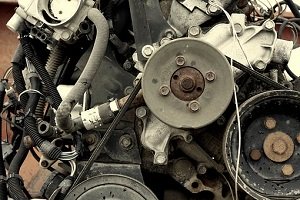Your vehicle is made of many different parts. In fact, a single vehicle can have 30,000 components or more! With so many parts, it’s hard to keep track of what they all do. In order to maintain your vehicle’s performance, your belts are something you should be familiar with.
Thank you for reading this post, don't forget to subscribe!They might not be good at keeping your pants up but the belts in your car play a big role in your vehicle’s performance. The major belts in your vehicle are the serpentine belt and timing belt.
Serpentines are responsible for power steering pumps, cooling fans, injection pumps, air conditioning, and a variety of other functions depending on your vehicle. Sometimes serpentine belts can do it all!
With one long snaking path, the serpentine belt winds in and out of several different components in your vehicle. It is made of extremely durable rubber with a smooth side controlling some parts and a ribbed side controlling others. If this belt breaks you will hear a squealing noise, your engine may overheat, and your power steering will stop working.
Timing Belts connect the upper engine to the lower engine. They are often called camshaft belts because they control the camshaft. Camshafts control the opening and closing of valves. Timing belts are equipped with specifically spaced teeth to control the frequency of valve openings and closures.
A bad timing belt can cause the valves to remain open and be struck by the pistons. This can cause a lot of damage, so you want to make sure you know the signs of a bad timing belt. Common signs include Engine misfires, leaking oil, trouble starting the engine, and ironically a ticking noise.
These belts are important to the operation of your vehicle and will give you plenty of signs that they need replacing. If you want to keep your belts running smooth, give them a quick check for cracks and wear. You can also consult your owner’s manual for estimated lifespans on your belts or take your vehicle into your local auto shop for inspection.


